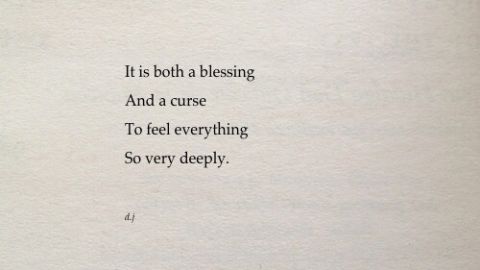The single major cause of emotional suffering and stress in our lives comes from the accumulated habitual emotional reactions to life events that we acquire through unconscious learning. We become victims of recurrent negative thoughts and patterns of emotional reactivity that operate automatically in the mind, and that operate outside the sphere of conscious choice. We become prisoners of our habitual thinking and suffer accordingly. Therefore, it stands to reason that if we want to reduce our level of emotional stress and suffering, we must learn new strategies to counteract and neutralize our conditioned habitual reactivity, and regain freedom and choice in how to respond to the demands of life.
Mindfulness Meditation Therapy teaches you how to work with your habitual reactivity through a series of exercises designed to help you recognize reactivity and then defuse this reactivity through mindfulness. Mindfulness is empowering, restoring freedom and choice, while creating the right inner space that allows emotions to unfold and resolve at the core level. Mindfulness training stops you from being the victim of conditioned stress reactions, and puts you back in the driving seat, allowing you to control how you want to feel, rather than simply falling under the spell of your habitual reactivity. The approach is relatively easy to learn and can be communicated very well through email correspondence and webcam sessions.
Stress
It is 8am and you wake up after a difficult night’s sleep only to discover that the alarm didn’t go off. This makes you very agitated as you realize that you will be late for work and your boss told you off for being late only last week. You tumble out of bed and rush down stairs for breakfast. No coffee. You become flustered at the prospect of starting the day without coffee, and you lose your temper with your partner for forgetting to turn on the coffee maker. Then you feel guilty about being angry, and that weighs heavily on your mind as you climb into your car. The car won’t start. Now you are furious, because you recently paid a lot of money to have the car serviced. Being late, you hit rush hour and have to deal with all the frustrations of slow traffic, which increases your stress level to boiling point. Things are made even worse when a car cuts in front of you, and you explode with anger and yell at the driver. The driver turns out to be an old lady, and you feel embarrassed and guilty for your inappropriate reactions. Eventually you make it to the office, but there is nowhere to park, since you are late and you become even more dejected. Exhausted, you finally make it to the office, sit down at your work and begin a day doing a job that you don’t enjoy in an environment that you hate and with people who do not seem to appreciate how hard you try. The boss says he wants to see you and panic sets in.
Does this sound familiar?
For much of the time we live as slaves to the negative habitual emotional reactions of agitation, disappointment, frustration, anger, guilt, stress, anxiety and fear. The emotional suffering is not caused by being late or the difficult drive to work. These may be a source of pain, but are not sufficient to cause mental suffering. Suffering is always a product of the way we react to such events and these subjective reactions are something that we have learned unconsciously. As the saying goes,
“Pain is inevitable, but suffering is optional.”
We learn to react with anger and disappointment when things don’t go our way, in exactly the same way that we learn to be happy when our expectations are fulfilled. This is an important point, because although we cannot have complete control over external events, we can control how we react to them. If you remain attached to your reactions, then you will suffer as long as those attachments remain in place. This is what mindfulness is all about: learning to recognize your reactions and then responding to each of them with mindfulness, and through that process of touching each reaction with mindfulness, you learn to let go of your subjective reactions.
Mindfulness is something that we are all familiar with at some level. We learn to be mindful when painting a picture or doing any activity that requires concentration. If we are wise, we will practice mindfulness when listening to our spouse or friend. We all know how important it is to listen with an open mind and be completely present. If you are not present, and lost in your own thoughts or lost in your own impulse to try and fix things, then your partner will probably feel that you are not listening, and communication will suffer. Being mindful, means being aware of what is happening right now, in the present moment. This means recognizing all that happens in the subjective world of your own reactions, as well as in the objective world of experience. In order to be fully present, you must be mindful of both internal and external events.
In our usual unaware and unmindful state, we let our thoughts and emotions run wild, like unsupervised children, and this leads to confusion, disorder and emotional stress. Developing the skill of mindfulness means that we stop, look and listen to what is going on in the mind. We teach ourselves to recognize a thought when it arises and to see an emotional reaction when it arises. This is learning to recognize the contents of the mind and to respond to it with mindfulness. Now this is immensely important, because in that brief moment of mindful recognition there arises a moment of choice, before we become lost in the thought or emotional reaction. In mindfulness practice, we learn to recognize this interval and cultivate it so that it becomes longer in duration and stronger. With practice, we gain a completely different perception, and see the contents of the mind as objects, like the children in the classroom. We begin to see that we do not have to react, that we do not have to be dragged into reactivity by the thoughts or by the emotions that arise in the mind. We can learn to say, “Thanks, but no thanks. I choose not to react right now.” This is a completely different scenario than our usual impulsive reactivity, where we are compelled to react according to whatever content happens to arise in the mind.
What we learn during Mindfulness Meditation Therapy is to make a fundamental shift in our identity from being identified with the contents of our mind, to being the knowing of the contents of our mind. Anger, disappointment, frustration, anxiety arise, but now we don’t identify with this content; we simply say, “Thanks, but no thanks,” and remain mindful, observing and knowing what is present, but without the further reactivity that simply makes things worse. This is learning to see that we are not the same as our thoughts, but that we are actually much bigger than any of the thoughts, emotions or negative beliefs that arise. Our essential nature is as the container of all this content, the conscious space that contains; the pure knowing itself. This fundamental shift from being our thoughts to being the knowing of our thoughts is the most important first step on the path of inner transformation, and mindfulness is an excellent tool for cultivating this new state of being.
Mindfulness Meditation
We can practice mindfulness throughout the day in all our activities: in our physical actions; when speaking; and most importantly of all, the activities of our mind. This is cultivating mindfulness of body, speech and mind. What we are learning through mindfulness is to be more present for all these activities, whilst also learning to be mindful of any impulse to react to any activities involving body, speech and mind.
Set yourself a task. Challenge yourself to be mindful when talking to a friend or colleague. Besides learning to be mindful of these activities, also look closely for any impulses to react emotionally. Look for anything that causes agitation and pulls you off balance. Recognize these reactions and respond to them with mindfulness.
It’s also good to set aside 15-30 minutes each day to practice mindfulness meditation. Not having to deal with lots of distractions and demands can give you time to really work on your mindfulness skills. Mindfulness meditation means turning your attention inwards to examine the mind in detail and in depth. The more familiar you become with all the activities, impulses and habitual reactivity that constitute the mind, the less control they will have over you, and the more freedom you will experience. It is always what you don’t see that does you the most harm, and mindfulness meditation is learning to see exactly what is present in the mind. When we become cut off, or dissociated, from our inner emotions, they will control us. The purpose of mindfulness meditation is to reconnect with these inner parts that clearly needs our attention and care.
Take a few minutes to relax and then close the eyes and go inside and get in touch with that inner stillness that lies just beneath the surface when we let go of thinking and reacting. Spend the first part of your meditation session residing in this inner stillness and watch for the arising of thoughts, worries and other mental objects, which will inevitably arise. Greet each thought, feeling or impulse. Acknowledge it and then gently let go of it and return your attention back to the still center. You my notice sounds, sensations in the body, or other physical sensations. Note each sense object as it enters your field of consciousness and then respond by gently letting go. In this way you cultivate the inner place of pure knowing that is still, tranquil and not reactive. This inner state of composure and stability is called samadhi, and as we develop samadhi, we develop a very powerful inner resource and strength that helps us maintain balance and prevents us from becoming reactive. After we have developed the felt-sense of this inner center of stillness, then we can proceed to the more difficult step of investigating our patterns of emotional reactivity.
Imagine a scenario – past, present or future – that you know is a hot bed of reactivity. Perhaps a recent argument with a spouse, or something that you are worrying about, or some topic that creates anxiety and stress in your life.
Now practice learning to recognize any emotional impulses that arise and try to pull you off balance into thinking or becoming upset or agitated. Learn to recognize each mental object, each thought, feeling and impulse, and respond to each with mindfulness and just see it as it is. When you respond with mindfulness in this way, then in each moment of mindful-contact, you are also spontaneously letting go of the impulse to react. Notice how, each moment of mindfulness returns you to that inner stillness and inner calmness that is not identified with the reactive content of the mind.
This is not an easy process, and it will take time to develop, but what could be more important than learning not to react; of developing inner freedom and choice; of cultivating the inner strength and stability of mind in the midst of the chaos of our lives? If you make the effort, you can develop the skill of mindfulness, and it will grow exponentially as you begin to experience the benefits of not being the victim of the ups and downs of life. Every response of mindfulness strengthens the mind; every reaction based on unawareness weakens the mind. Mindfulness energizes our being; reactivity drains the mind and spirit. Mindfulness makes us more compassionate; reactivity makes us more violent.
The choice is yours: responsiveness or reactivity; mindfulness or suffering. Good luck!
Dr Peter Strong offers personalized online instruction in Mindfulness Meditation as well as online Mindfulness Psychotherapy for working with difficult emotions such as anxiety and depression, trauma and phobias. “I will be happy to work with you through email correspondence or webcam sessions.” Visit MindfulnessMeditationTherapy.com.



